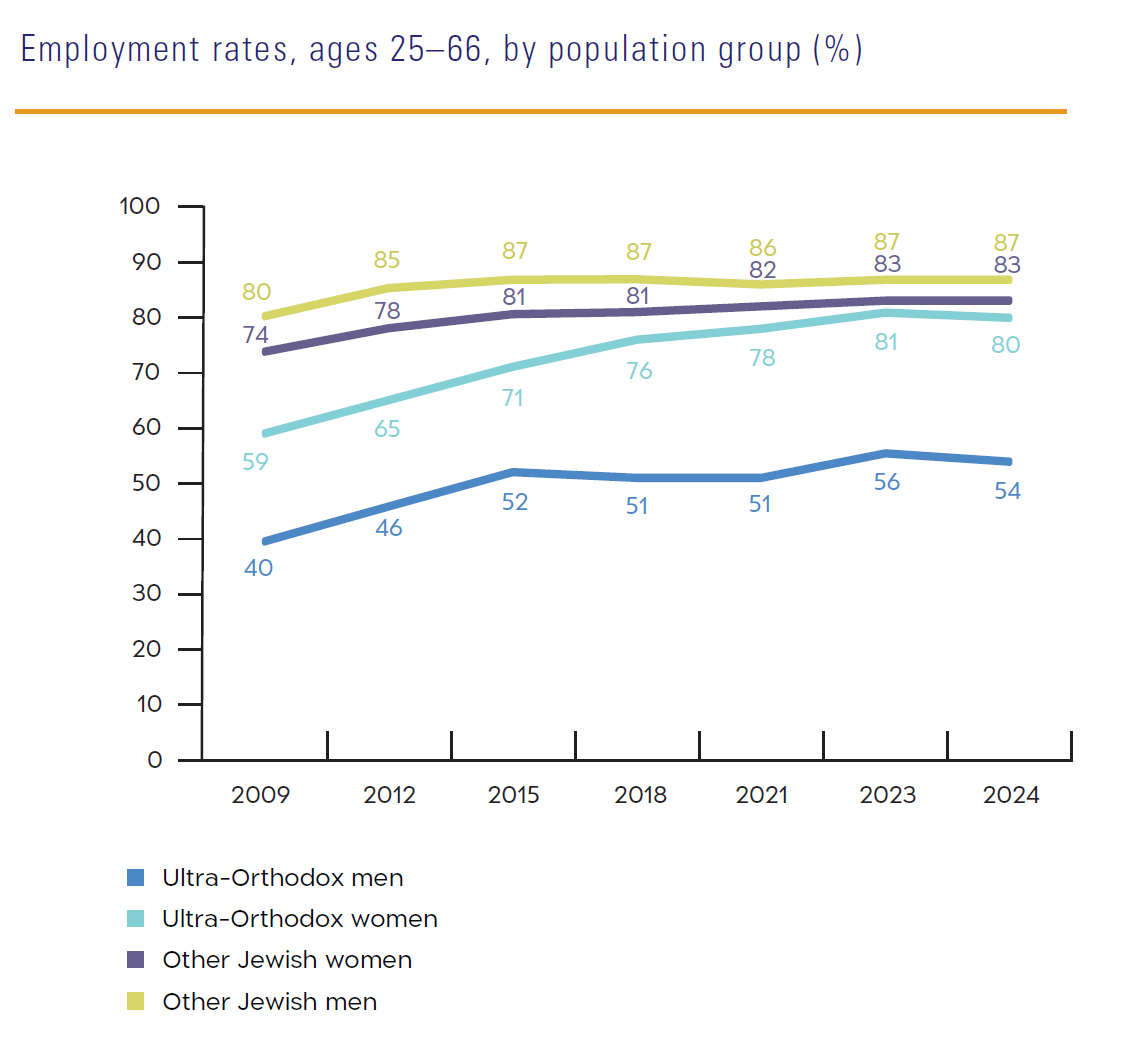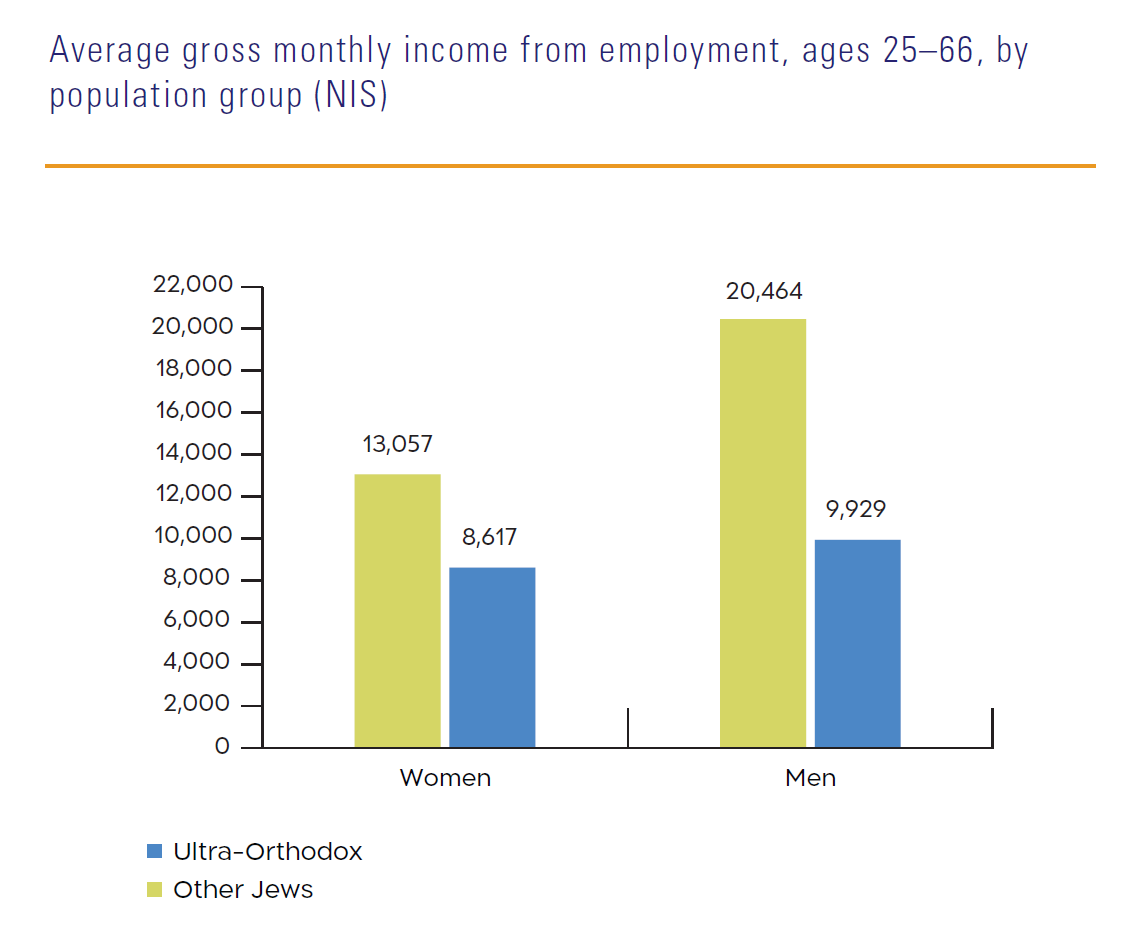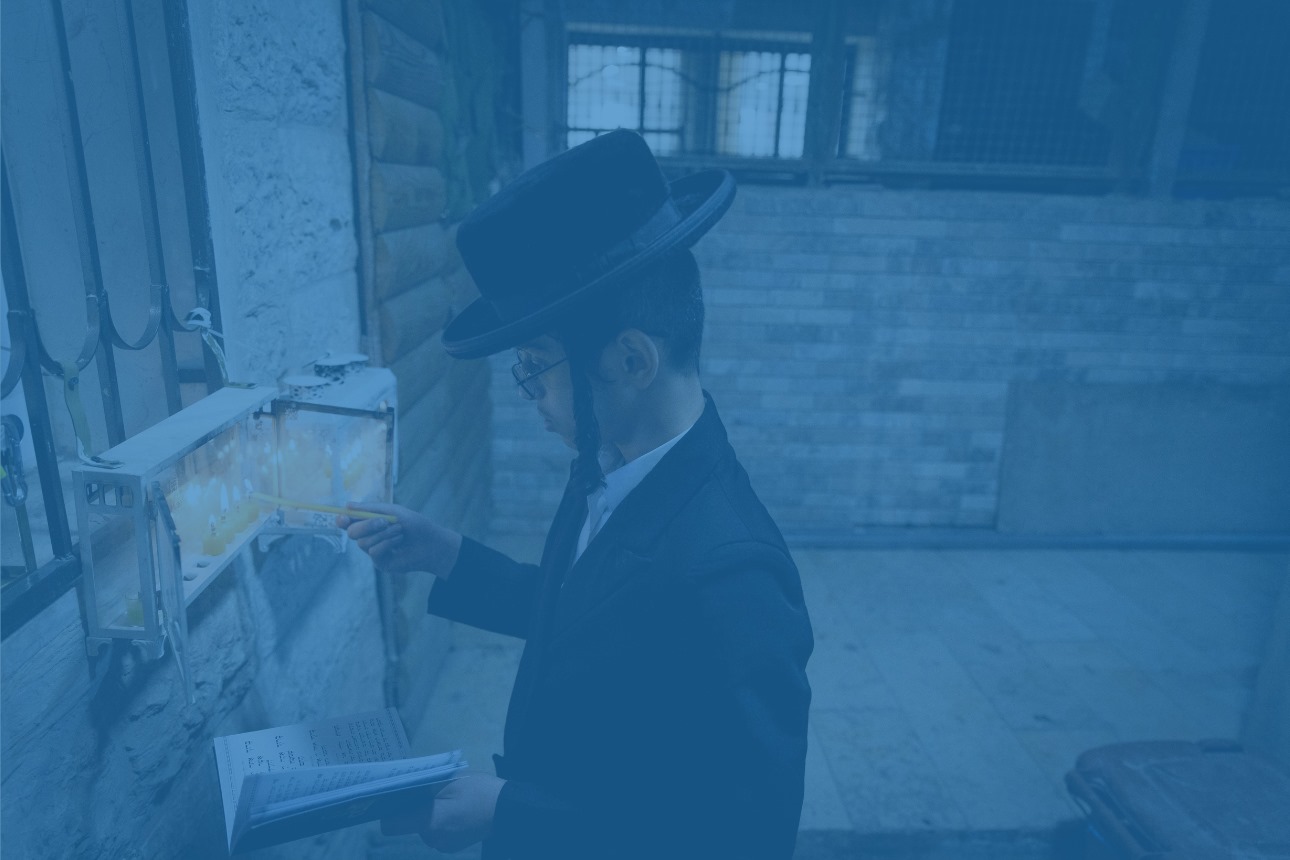Employment
Chap. 4
One of the main topics of public debate regarding the place of the ultra-Orthodox community in Israeli society is employment. In 2002, around one-third of ultra- Orthodox men were employed, and just over half of ultra-Orthodox women. Between 2003 and 2015 there was a major surge in ultra-Orthodox employment rates for both men and women, resulting from a combination of economic need in the community and of public policy designed to promote entry of ultra-Orthodox Israelis to the labor market by various means. As a result, more than half of ultra- Orthodox men (54%) and more than three-quarters of ultra-Orthodox women (80%) are now employed. However, the rise in employment rates among men has come to a halt in recent years (2016–2024).

The average income of ultra-Orthodox employees is just 55% of that of other Jewish workers. Among other factors, this difference can be attributed to the fewer weekly hours worked by ultra-Orthodox workers and lower compensation, which is a result of limited vocational training and concentration of these workers in lower-paying occupations.

In the last nine years which we examined (2014–2023), we have not seen a trend towards narrowing the difference between the industries in which ultra- Orthodox men and women are employed and those in which other Jewish men and women work. For example, 20% of non-Haredi Jewish men work in high tech, compared to only 3% of Haredi men.











